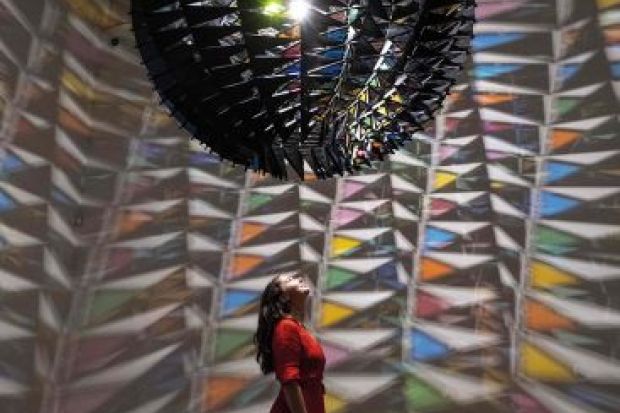“I think I became an art historian because, as far as I knew, no other field allowed one to stand unnoticed in a dark room with the audience’s eyes trained, not on the podium, but on a beam full of luminous images.” So says Barbara Maria Stafford in her preface to this collection of essays, although I would argue that the same thing applies to many science careers (eg, in imaging, microscopy or macromolecular structure). Perhaps this is why Stafford has made a gargantuan effort to immerse herself in scientific principles and offers her readers a unique lens for visualising art through the more qualitative side of science.
If you enjoy swimming in a psychedelic soup of glittering ethereal ideas while panning for your own personal gold, then you won’t be disappointed in this book, which contains insights from a life’s work of interdisciplinary imagining. If you found that last sentence self-indulgent, then this definitely isn’t the book for you as the language is elaborately poetic, sometimes to the extent that several rereads are required.
The many illuminating illustrations are in greyscale, which I suspect is less a budgetary constraint and more a reflection of the titular themes of darkness and shadow that thread through the essays. As the author writes, “my persistent topics wrestle with the strangeness of shadow, the mysterious varieties of shade, the opacity of surface, the blur of perception”. If glorious technicolour or three dimensions are more your thing, by happy coincidence, many of the works explored in this book are currently on display in the UK, so it could be used as an eccentric tour guide. With Olafur Eliasson on show at Tate Modern, Kiki Smith at Modern Art Oxford, William Carrick’s photographs in the Scottish National Portrait Gallery, Ellsworth Kelly and Anish Kapoor curated together “In the Studio” at Tate Modern, not to mention weekly events across the country (and beyond) for this year’s Iris Murdoch centenary, many days could be spent on field trips. There’s a chapter written in 2014, on the Warburg Institute library in London, under threat of dissolution, and the need to preserve its unique organisational system, instead of leaving its books “drowning… in the vast holdings of the University of London”. As far as I can tell, from googling now, it still seems to be alive and well and open to visitors.
Despite my active lack of interest in diamonds (other than Diamond Light Source, which is vital for my research), “Thought Gems” and “The Jewel Game”, two thought-provoking essays on gemstones, really spoke to me. While I refused an engagement ring on ethical, feminist and anti-materialist grounds, the crystalline form excites me on many levels, whether as a way of discovering detailed molecular shapes through X-ray crystallography or as the style of a focused novel such as Albert Camus’ The Stranger, described by Iris Murdoch in a 1959 essay in Yale Review as a “tight metaphysical object, which wishes it were a poem”. That same essay also expounds upon the Kantian definition of the “sublime”, a concept which evolves throughout Stafford’s musings from essays grouped under “inscrutability”, through those on “ineffability” and finally some on “intuitability”. As these subtitles indicate, there is a lot of room for interpretation when art and science collide and that, perhaps, is the joy of it.
Rivka Isaacson is reader in chemical biology at King’s College London.
Ribbon of Darkness: Inferencing from the Shadowy Arts and Sciences
By Barbara Maria Stafford
University of Chicago Press, 232pp, £76.00 and £23.00
ISBN 9780226630489 and 9780226630519
Published 18 June 2019
Register to continue
Why register?
- Registration is free and only takes a moment
- Once registered, you can read 3 articles a month
- Sign up for our newsletter
Subscribe
Or subscribe for unlimited access to:
- Unlimited access to news, views, insights & reviews
- Digital editions
- Digital access to THE’s university and college rankings analysis
Already registered or a current subscriber? Login






